Keynotes
DSD 2016 Keynote Speakers
1) Dr. Yervant Zorian, Fellow & Chief Architect, Synopsys
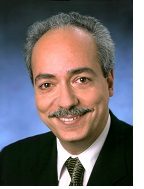
Dr. Yervant Zorian is a Chief Architect and Fellow at Synopsys, as well as President of Synopsys Armenia. Formerly, he was Vice President and Chief Scientist of Virage Logic, Chief Technologist at LogicVision, and a Distinguished Member of Technical Staff AT&T Bell Laboratories. He is currently the President of IEEE Test Technology Technical Council (TTTC), the founder and chair of the IEEE 1500 Standardization Working Group, the Editor-in-Chief Emeritus of the IEEE Design and Test of Computers and an Adjunct Professor at University of British Columbia. He served on the Board of Governors of Computer Society and CEDA, was the Vice President of IEEE Computer Society, and the General Chair of the 50th Design Automation Conference (DAC) and several other symposia and workshops.
Dr. Zorian holds 35 US patents, has authored four books, published over 350 refereed papers and received numerous best paper awards. A Fellow of the IEEE since 1999, Dr. Zorian was the 2005 recipient of the prestigious Industrial Pioneer Award for his contribution to BIST, and the 2006 recipient of the IEEE Hans Karlsson Award for diplomacy. He received the IEEE Distinguished Services Award for leading the TTTC, the IEEE Meritorious Award for outstanding contributions to EDA, and in 2014, the Republic of Armenia's National Medal of Science.
He received an MS degree in Computer Engineering from University of Southern California, a PhD in Electrical Engineering from McGill University, and an MBA from Wharton School of Business, University of Pennsylvania.
Title: Robustness Challenges in Internet of Things
Abstract:
The Internet of Things (IoT) is an extremely fragmented market and can be defined as anything from sensors to small servers. It is estimated that over 30 billion IoT devices will ship by 2020. The ability to sense countless amounts of information that communicates to the cloud is driving innovation into IoT applications, such as in wearable devices (for health, fitness or infotainment applications) and in machine-to-machine applications (in smart appliances, smart cities or commerce). With the ongoing adoption of IoT, it has become crucial for today's chips to use a range of new solutions during the design stage to ensure the robustness of manufacturing test, field reliability and security. DFT designers need to use new test and reliability solutions to enable power reductions during test, concurrent test, isolated debug and diagnosis, pattern porting, calibration, and uniform access. Moreover, the per unit IoT price remains a key factor in high volume production. Thus, minimizing the test cost while meeting the above technical issues is one of the major challenges of the IoT industry. This keynote, besides discussing the key trends and challenges of IoT, will cover solutions to handle the wide range of potential robustness challenges during all periods of the IoT lifecycle from design, post silicon bring-up, volume production, to in-system operation.
Session chair: Lech Jozwiak
2) Prof. Dimitrios Serpanos, Univeristy of Patras, Greece
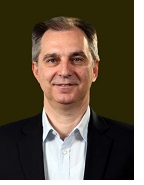
Dimitrios Serpanos is Professor of Electrical and Computer Engineering at the University of Patras and Director of the Industrial Systems Institute in Patras, Greece. He holds a PhD in Computer Science from Princeton University and an Engineering Degree in Computer Engineering from the University of Patras. His research is in embedded systems, industrial systems and security.
Professor Serpanos' professional experience includes teaching, research and academic administration work. He has served as President of the University of Western Greece (2010-2013) and as Director of the Industrial Systems Institute (2008-2013 and 2016- ). He has held positions as Research Staff Member at IBM Research-T.J. Watson Research Center, faculty at the Universities of Patras and Crete, associated faculty at the Foundation of Research and Technology-Hellas (FORTH) and the Industrial Systems Institute, and Principal Scientist at the Qatar Computing Research Institute.
Professor Serpanos has published extensively in journals and conferences and holds two US patents. He has authored and edited several books. He has served as General and TPC Chair in several IEEE and ACM events, and he is an Associate Editor of the ACM Transactions on Embedded Computing Systems and IEEE Transactions on Industrial Informatics.
Title: False Data Injection Attacks on Industrial Control Systems
Abstract:
Industrial Control Systems (ICS) include the computer systems that manage and control power grids, water de-salinization and purification, oil and gas pipelines as well as other critical infrastructure. Critical infrastructure is increasingly controlled by networked computer systems whose vulnerabilities can be exploited to cause physical destructions, including human harm, such as explosions, power outages, water contamination, traffic disruptions, etc. ICS are industrial computers, which often have special configurations, running tailored operating systems whose vulnerabilities are different from those of more conventional Information Technology (IT) systems. However, ICS computers are often connected (directly or indirectly) to conventional IT, allowing attackers to exploit conventional systems as a first step in penetrating ICS.
ICS are online, real-time systems that run continuously. They are typically composed of 3 parts: a controller, sensors and actuators. The controller continuously inputs sensor readings, estimates the actual state of the physical plant being controlled, and then, issues commands to the plant's actuators in order to bring it into an appropriate state. All computational sub-systems -controller, sensors and actuators- have exploitable vulnerabilities. Attackers may penetrate the sensors, causing them to deliver false readings (false data injection), the controller, causing it to issue inappropriate commands, or the effectors, causing them to respond inappropriately to their received commands. Any of these three types of attack can cause the plant to fail drastically, causing physical damage and loss of service.
Considering the criticality of ICS, it is imperative to employ rigorous methodologies for the design and development of secure and resilient ICS systems. Formal methods, for example, can be an indispensible tool for analyzing vulnerabilities of plants and processes as well as for proving security properties of the process software. Self-aware systems can also be developed today with ability to detect attacks and failures and to recover automatically in fail-safe states.
In this talk, we describe design methodologies for the development of secure and resilient ICS with an approach that starts from the process/application layer. We focus on false data injection attacks, presenting current methods for their detection and mitigation, and a new direction of vulnerability analysis for such attacks.
Session chair: Paris Kitsos
3) Ing.Eur.Dr.Gustavo Marrero Callico, Universidad de Las Palmas de Gran Canaria, Spain
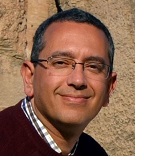
Gustavo M. Callico was born in Granada, Spain, in 1970. He received the M.S. degree in telecommunication engineer in 1995 and the Ph.D. degree and the European Doctorate in 2003, all from the University of Las Palmas de Gran Canaria (ULPGC) and all with honours. From 1996 to 1997 he was granted with a research grant from the National Educational Ministry and in 1997 he was hired by the university as an Electronic Lecturer. In 1994 he joined the Institute for Applied Microelectronics (IUMA) and from 2000 to 2001 he stayed at the Philips research Laboratories (NatLab) in Eindhoven, The Netherlands, as a visiting scientist, where he developed his Ph.D. thesis. He is currently an Associate Professor at the ULPGC and develops his research activities in the Integrated Systems Design Division of the IUMA. He has more than 110 publications in national and international journals, conferences and book chapters. He has participated in 17 research projects funded by the European Community, the Spanish Government and international private industries. Dr. Callico currently serves as an active reviewer for the Journal of Real Time Image Processing (JRTIP); the EURASIP Journal on Embedded Systems: Embedded Systems for Portable and Mobile Video Platforms; the ETRI Electronics and Telecommunications Research Institute; the ACM Transactions on Design Automation of Electronic Systems; the Microprocessors and Microsystems: Embedded Hardware Design (MICPRO) journal; the SPIE Journal of Electronic Imaging; the Geoscience and Remote Sensing Letters (GRSL); the Journal of Signal Processing Systems; the Journal of Selected Topics in Applied Earth Observations and Remote Sensing (JSTAR); the SPIE Optical Engineering; the Sensors Journal and the British Journal of Neurosurgery. He is also an Associate Editor of the IEEE Transactions on Consumer Electronics from 2009. He is currently the coordinator of the European Project HELICoiD "HypErspectral Imaging Cancer Detection" funded by the European Commission through the FP7 FET (Future and Emerging Technologies) Open programme, under Grant Agreement 618080. From 2014 he is the director of the GPU Research Centre supported by NVIDIA. He has been an invited professor in the University in Pavia (Italy) in October 2015. His current research fields include hyperspectral imaging for real-time cancer detection, real-time super-resolution algorithms, synthesis- based design for SOCs, and circuits for multimedia processing and video coding standards, especially for H.264 and SVC.
Title: Hyperspectral Imaging for Brain Cancer Detection
Abstract:
Brain tumours are among the commonest tumours worldwide with estimated incidences of approximately 3.4 per 100,000. Tumour removal can be a cure for some low grade tumours and can prolong life in more aggressive tumours. However, because brain tumours infiltrate and diffuse into the surrounding normal brain tissue, the surgeon's naked eye is often unable to distinguish between the tumour and normal brain. Consequently, tumour tissue can unintentionally be left behind during surgery which can later recur. On the other hand, if too much of the tissue is taken out, normal brain is damaged which can lead to permanent disability. Hyperspectral Imaging (HI), collects high resolution spectral information consisting of hundreds of bands across the electromagnetic spectrum, ranging from the ultraviolet to the infrared range. Thanks to this huge amount of information and using a set of complex classification algorithms, it is possible to identify the different materials or substances that compound the image. The HELICoiD (HypErspectraL Imaging Cancer Detection) project is a European FET project that has the goal of developing a demonstrator capable to discriminate with high accuracy between normal and tumour tissues, operating in real-time during neurosurgical operations. This demonstrator can help the neurosurgeons in the process of brain tumour resection, avoiding the excessive extraction of normal tissue and the accidental leaving of small tumour tissues that could cause tumour recurrence. The precise delimitation of the tumour boundaries can improve the results of the brain surgeries. This information will be provided to the surgeon in real-time via different display devices, and in particular by overlaying the conventional images with a simulated colour map which indicates the normal tissues and the tissues affected by tumour cells. The integration of hyperspectral imaging and intraoperative imaged guided surgery systems should have a direct impact on patient outcomes. Potential benefits include: allowing confirmation of complete resection during the surgical procedure, avoiding complications due to "brain shift", and providing confidence that the goals of the surgery have been achieved.
Session chair: Francesco Leporati
SEAA 2016 Keynote Speakers
1) Dr. Pekka Abrahamsson, NTNU, Norway
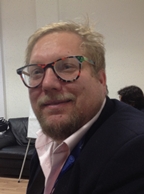
Dr. Pekka Abrahamsson is currently serving as a professor of software engineering at Norwegian University of Science and Technology in Trondheim, Norway. He was previously the dean and a full professor of computer science at Free University of Bozen-Bolzano in Italy. His background is in the software process improvement, agile software development and empirical software engineering research. He is the originator of the Mobile-D development methodology for mobile applications. Abrahamsson has researched and taught software startups since 2011. He is the chairman of the Global Software Startup Research Network and was awarded the Nokia Foundation award in 2007. Today he also actively launches new startups on various technology domains as a part of his empirical startup research roadmap.
Title: Software startups are changing the world! What can we learn from them?
Abstract:
The research established that the environment of software startups is extremely dynamic, unpredictable and even chaotic. These companies develop software-intensive products under highly uncertain conditions, tackling fast-growing markets under severe lack of resources. Still, startuppers are pushing the new technology to its edge and often showing the others how to profit from it.
Indeed, startup ecosystems are one of the most important economic drivers in today’s economy. The future growth in the national economy relies in many ways in the success of tomorrow’s ICT based startups. Yet, today the failure rates in startups are high. Studies show that about 90% of funded startups do not manage to become profitable. This has not however discouraged communities, cities and universities in investing in nurturing startup ecosystems. One reason for this is may be the fact that also small-sized Nordic countries have proven over the years that they can be very successful in nurturing world-class startups. Such companies are for example Supercell (FIN), Spotify (SWE), Kahoot (NOR), Podio (DEN), QuizUp (IS).
As an example of the financial impact and novel ways of working, Supercell was established in 2011 and in 2014 it sold 51% of its shares to a Japan priced at 1.2 billion euros. Being massively profitable company still today its development model is unique. Teams have a full autonomy over their project and as a result, most of the company’s game projects are terminated by teams’ own decisions and only a very few ones are ever being published.
As a result of the startup movement, the large industry is keenly looking for ways to adopt startup-like development culture in large companies. The idea is increase the innovative capability and speed.
The keynote seeks to provide answers to questions like how startups innovate and develop software?
Why startups are failing so often? Why startuppers are motivated and work often without any compensation?
What are the burning problems in software startups that the research is tackling? How large companies can benefit from startup software development and innovation? Why large company will fail when trying apply Lean Startups in practice?
Session chair: Carmine Gravino
1) Carl-Eric Mols, Sony Mobile
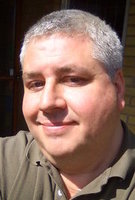
Carl-Eric Mols holds since 2008 the position as the Head of Open Source SW Operations in Sony Mobile, the smartphone and smartwear subsidiary of Sony Corporation. As such, he has the responsibility to drive and evolve Sony Mobile’s abilities and capabilities of handling and govern Open Source in all its aspects, i.e. to evolve Sony Mobile’s “Open Source Maturity”. He is also engaged in the ITEA 2 European research project SCALARE, about scaling up software business capabilities, were Open Source takes a prominent part. His background is within the field of software engineering, although many of his colleagues are nowadays convinced that he has a copyright law degree.
Title: Gaining maturity in Open Source - a model based on Sony Mobile's journey
Abstract:
The use of Open Source is swiftly increasing in industry. From being something that was used in only specific cases and foremost within the ICT area it is now the basis for several new and diverse product areas, such as in the EV automotive industry, drones and everything else with the Internet of Things.
This talk will give experiences from Sony Mobile in Sweden, which has gone from developing a proprietary product to developing an Android-based product, which would be impossible to be developed without open source. Experiences from working with the community of different projects will be provided and the talk will cover how to interact with a community, how to work with long-term strategic questions when you are dependent on an open source community, how to decide which parts to keep internal or implement with open source parts, how to decide to what extent own software should be provided to an open source community, etc.
Many of the experiences have been used to formulate an “Open Source Maturity Model” which describes how to go from an ad-hoc view on usage of open source to a way of working where open source is part of the strategic decisions and the business. The model will be presented, with examples of activities at different phases of this model.
Session chair: Martin Höst

